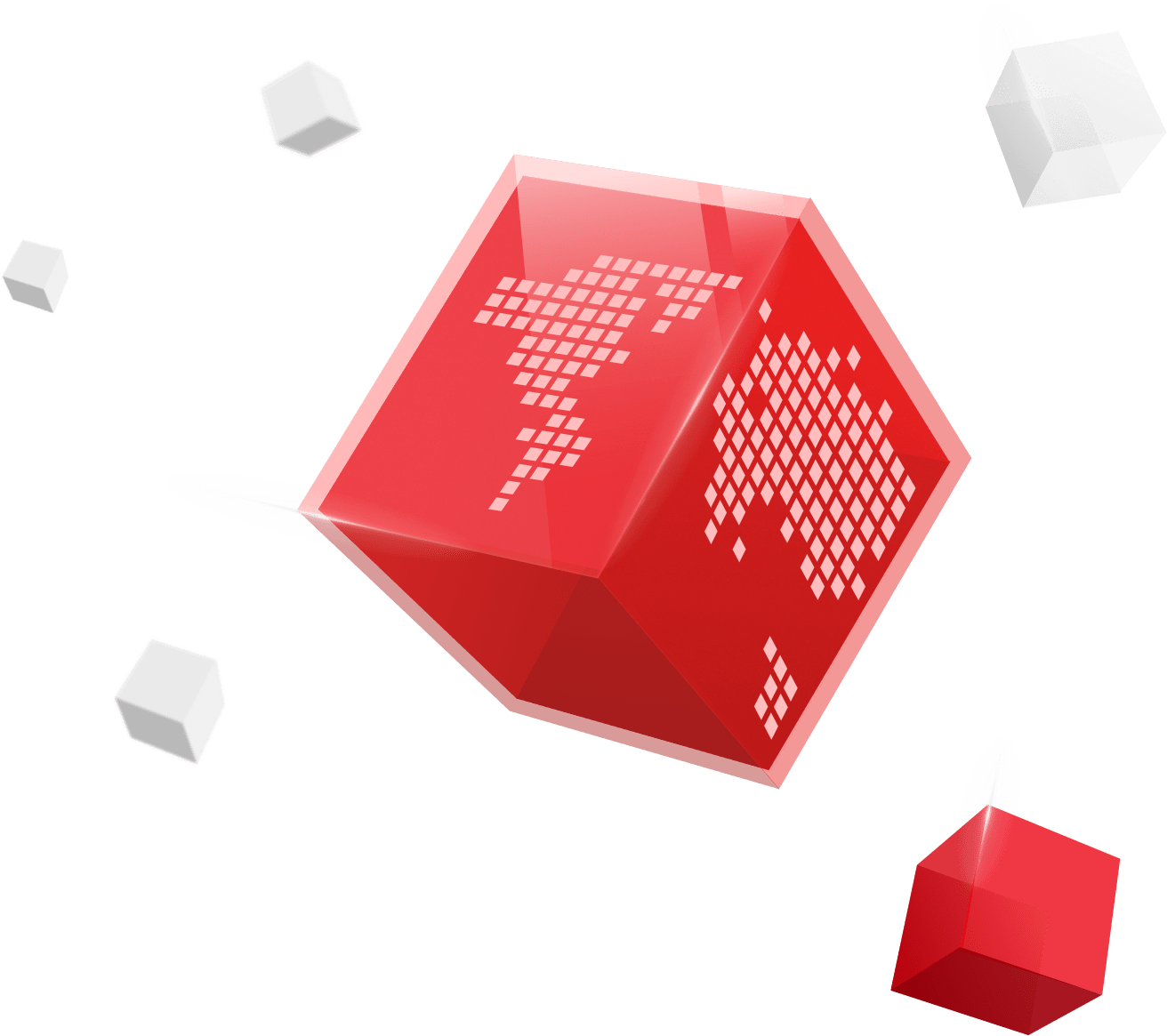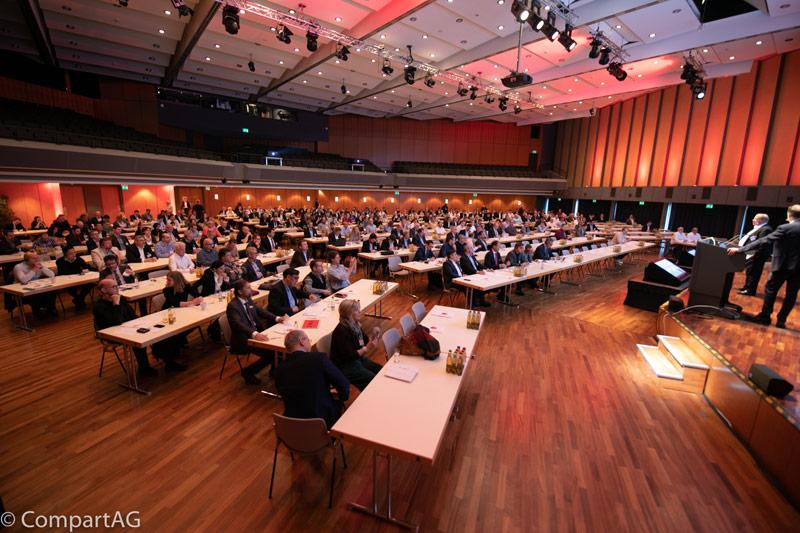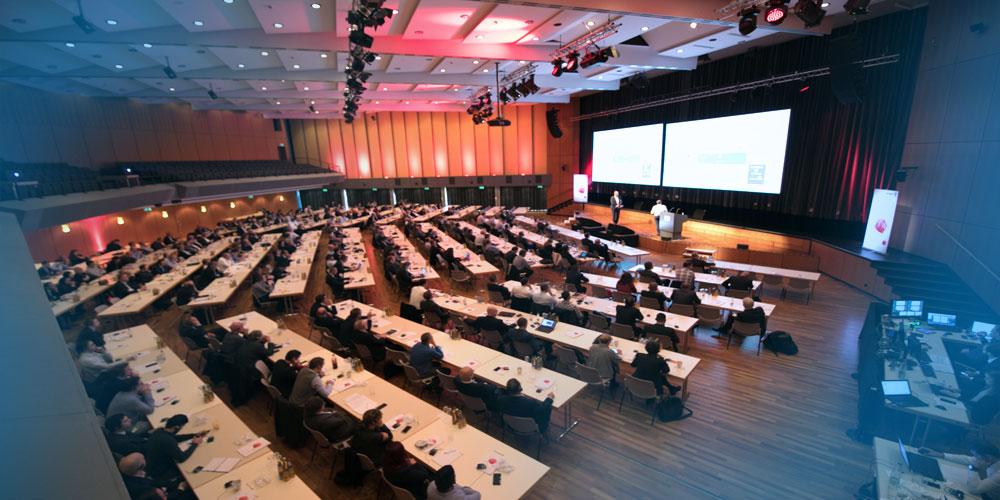

Does Innovation kill Stability? (or Vice Versa)
Cloud Computing, Blockchain, Universal Accessibility
With regard to business technology trends and innovation, Comparting has rarely had its finger on the pulse of the zeitgeist as it did this year. After all, the conference usually deals with well-established and not-too-sexy topics like best practices in print production and data management. But this year, the sessions touched a nerve with many in our industry. Attendee feedback was higher than in years past. There were more questions from the audience as attendees tried to envision what these technology trends mean to them and their organizations.
Let’s look at the conference and see why.
"The handling of documents must be more comfortable," Harald Grumser recently demanded in an interview with the German-language trade magazine BIT. The founder and CEO of Compart AG thus played a key role in the current key trends in corporate customer communication: process automation, omnichannel input and output, and accessibility, to name but a few. These topics also dominated the agenda of this year's Comparting on 15 and 16 November in the Kongresshalle Böblingen.
At the annual Document and Output Management Congress, the 420 participants dealt with the creation, transmission, archiving and security of documents today and in the future.
A big topic this year: omnichannel, barrier-free communication
From a legal standpoint, the case is clear: Federal authorities must ensure since this year that everyone, including people with physical, mental and cognitive disabilities, get access to content and documents. For the private sector, this legal requirement does not (yet) exist. Nevertheless, according to Compart board member Harald Grumser, a blind man who cannot read his insurance policy can complain to the insurer, because he should not be excluded from such information.
In general, the topic of accessibility has a much larger dimension and goes far beyond the inclusion aspect, the CEO continued. "Artificial intelligence also needs eyes and ears." In other words, if documents of whatever type and shape are to be classified, evaluated and answered by machines, such as insurance claim reports, they must be structured differently than they were with human-based processing. Organizations are well-advised to align their document production processes accordingly. "This is a big topic in the near term," said Harald Grumser in a press conference.

Cloud computing has arrived in the document world
It is not without reason that this aspect was widely discussed at the conference: Klaas Posselt from the PDF / UA Competence Center explained the basics and legal framework of accessibility and, in this context, advised the audience to clearly define the responsibilities and competencies in its implementation. The presentation of DocBridge® Impress on a different track then made it concrete: the software developed by Compart enables the creation of omnichannel, responsive and generally accessible documents in one go ("design once"). The issue of accessibility is almost done in passing. It became clear that companies have the opportunity to make a legal duty a virtue – that is, to think about the modernization of customer communication not as a regulatory obligation but as a best practice.
Also at the top of the Comparting agenda: cloud computing. The topic is currently fueled by EU data protection regulation (DSGVO). As a software manufacturer, Compart AG relies on customer data for testing and proof of concept and was therefore immediately confronted with the new security requirements - as were many participants at Comparting.
The fact is: The DSGVO clears the way for cloud solutions in document and output management. More and more companies are coping with their peak load with the help of the cloud - for example, car insurers in November and banks in January each year. "That's why at the moment we always have the requirement to make our solutions cloud-capable," says Harald Grumser.
The cloud, according to the Compart CEO, requires a rethink in the IT industry: ultimately, it's about the fact that companies increasingly do not want to license software, but only want to pay for the degree of use. It's about cutting costs. "That's why the question of cloud computing is not an if, but rather a how, as a panel discussion on the second day of the event amply showed. David Stabel (Keypoint Intelligence), Udo Wirtz (Fujitsu), Roberto Schmidt (Generali) as well as Thorsten Meudt and Thomas Kübler (both Compart) put forward various arguments regarding the approach to cloud computing. Not every process is suitable for it.
It would be conceivable, for example, to obtain services for an ad hoc conversion of smaller quantities of documents via a cloud; whether in their own data center or at a specialized service provider. The difference between the two is essentially only one of location. There are now mixed forms (hybrid clouds) in which, for example, base loads are covered in their own data center and only so-called peak loads are taken over by external parties.
Ultimately, important policy issues must be clarified in advance. For example, one issue that struck many listeners was the question of how cloud installations could handle the current licensing models. There seems to be a lot of discussion here.
Innovation is not a question of budget
With regard to digitalization: there is still a lot of print and mail in both German and French companies.
For example, Talanx AG produces 84 million printed pages a year in-house. Germany's third-largest insurer expects a dramatic decline in classic print production in the future, with electronic channels becoming increasingly important as communication alternatives. As speaker Jürgen Hausl emphasized in his session at Comparting, now that documents created locally on the pc (for example, office documents from clerical staff) can be transferred to the central output management system, Talanx is able to achieve significant cost reductions. The elimination of non-specialist activities (manual enveloping / franking) and the saving of paper and toner mainly in the departmental printers has led to material savings. In this context, Jürgen Hausl encouraged the auditorium to turn document and output management into a driver of innovation for their own organizations.
Innovation versus stability. This was the topic that Harald Grumser addressed in his keynote session that opened the second day of the conference. He demanded that companies in general should become more courageous and that policymakers should create better framework conditions. The latter often lag behind the trends, according to Mr. Grumser. "Innovation is on the mind." New ideas have more to do with attitude than with the budget available, says the CEO. Many companies unnecessarily delay necessary modernization and often take a wait-and-see attitude. Grumser warned against oversleeping important trends. Kodak and Nokia, once market leaders and today only shadows of themselves, are probably the "most prominent" examples of missed trends.
On the other hand, not every supposed innovation turns out to be sustainable. One should not jump too fast on every new technology. "Innovation does not kill stability or consistency of excellence, they both have their right to exist," the CEO concluded.
German-French friendship at Compart
Michael Carl also pleaded for more innovation in his opening keynote on Thursday. The futurologist from the thinkTank 2b Ahead took on the "Customer 2025". In his entertaining keynote, a highlight of the entire congress for many visitors, the analyst made it clear that average and proven standards are no longer sufficient in customer communication today. Only with premium services, which are clearly different from the competition, will you reach your target group in future, says Michael Carl. In this context, he encouraged the audience to break common communication rules: Innovation always creates friction and one should also accept and allow it, the futurologist said in a nutshell. The goal must be to get customers to divulge as much information as they can and use that data in a more specific way.
Innovation and digitization with their numerous facets such as blockchain, cloud computing, barrier-free accessibility and much more were the thematic brackets of the entire congress, which, as every year, had a very international presence. Almost 30 percent of the visitors came from other European countries, especially from France. Harald Grumser therefore spoke at the opening of a "Franco-German friendship, which is actively practiced at Compart." A highlight in this context was the presentation by Sébastian Huault of Le Groupe Matmut. The French insurance group recently centralized its output management with the DocBridge® Mill Plus and DocBridge® Pilot solutions, and has since profited, among other things, from significant postage savings.
Many visitors thought that the quality of the lectures this year was particularly high. With the agenda, the conference hit the nerve of the industry. Last but not least, two new products were presented: DocBridge® Auditrack, a complete monitoring solution for multichannel customer communication (document production), and DocBridge® Gear, a platform for modeling and mapping document-oriented processes in both the batch and transactional processing.
As it is each year, most of presentations were simultaneously translated into the three conference languages, German, English and French.
ATTENTION!
The next Comparting takes place on 7 and 8 November 2019 in Sindelfingen.

Background Information
Comparting is an annual international technology forum for omnichannel document and output management that attracts companies of all sizes and industries. The two-day forum is particularly noted for its high-profile user reports from Germany and abroad as well as the wide range of topics. The number of attendees has grown steadily since the first forum nine years ago. This year more than 400 visitors from Europe and North and Latin America are expected. The forum features multiple tracks with proven technology sessions, a press roundtable for journalists and more than ample opportunities for networking.
Program
Theoretical and practical knowledge around document processing and output management.
"Very informative event with plenty of room for specialist exchanges and networking."
Comparting attendee


